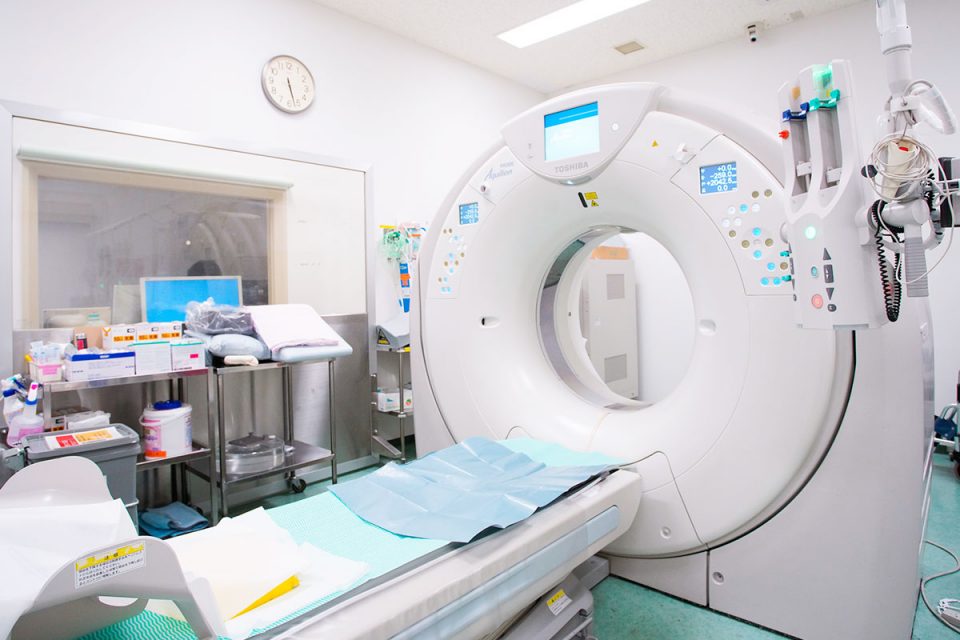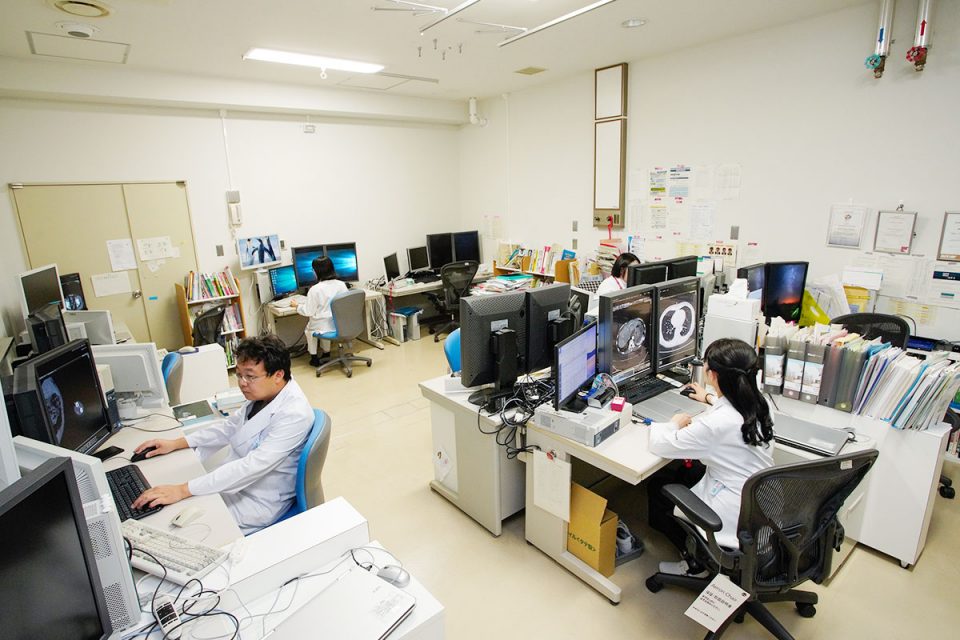CT displays a representation of the cross section of the entire human body using X-rays. A patient is exposed to radioactivity, and its absorption by the body is computed to create images which allow doctors to see inside the patient’s body. This technique clarifies organ status deep inside the body and helps the doctors understand its three-dimensional relation with other organs. CT provides far more information in both accuracy and volume than a regular X-ray can, contributing greatly to diagnosing disease and offering a treatment option to patients. The latest scanners operate at high speed and take only about 10 minutes to complete a detailed body scan. This is the reason why CT is frequently used. Patients may find CT comfortable and feel at ease when being scanned. However, due caution is required: Radiation’s effect adds up over a patient’s lifetime. The Department of Diagnostic and Interventional Radiology of Hokkaido University Hospital gives advice proactively and instructs medical doctors on the efficient use of CT.
|
Patients are scanned in the CT room of Hokkaido University Hospital. There are three CT scanners at present: 320-, 128- and 80-row multidetector scanners (Pictures 1 to 3). High-speed imaging produces images of the beating heart or three-dimensional images of other organs, and helps doctors understand the form/shape/structure of a lesion/body. Indeed, the doctors in clinical settings are generally supportive of this technology, saying “It is easier to diagnose,” “It helps me explain the state of a disease to a patient,” and “It is extremely useful in preoperative planning and in accurate treatment.” |
Adjacent to the CT room is the CT scan interpretation room (Pictures 4 to 6) in which diagnostic radiologists are stationed. They interpret (diagnose) CT images and send an interpretation report to the doctor requesting the CT scan. The CT scan interpretation room is an open space for free discussion between the diagnostic radiologists. Sometimes, doctors from other departments come here to consult them. To maintain the quality of comments, qualified specialists of diagnostic radiology give training to unqualified radiologists and residents.







